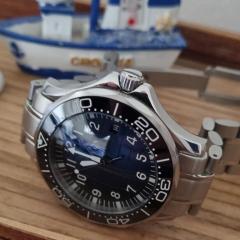Missing roller jewel
-
Similar Content
-
Recently Browsing
- No registered users viewing this page.
-
Topics
-
Posts
-
By Terrinecold · Posted
I cleaned the balance and pallet fork with hexane and a brush as well as peg wood for the spring. The spring which were on the main plate went into the regular cleaning: ultrasonic in lighter fluid for wash ultrasonic in lighter fluid for rinse 1 ultrasonic in IPA for rinse 2 Dried out with hair drier But the movements in this case were really unbelievably dirty. I'll add picture today or tomorrow when I have my sd card reader and can extract them from the microscope camera. Like if they had spent some time buried in the woods outside of a case so I am not sure that learning to clean such is really actively useful. -
By Terrinecold · Posted
Hello, if you have seen some of my posts since I started in this forum you know that I am new to watch making and I have had my share of mishaps but I think here is an accurate statement of where I am: 1) I think I can disassemble and reassemble an ST36 correctly without damaging the hairspring or loosing parts (most of the time) 2) I think I can clean a movement which is reasonably dirty (a new movement or one like the 6T15 I worked on which has 15 year old lubrication but no actual dirt or water ingress). 3) I have an idea of how to lubricate a simple movement but not practiced much and I am pretty sure I am messing it up 4) I made a watch out of an ST36 and parts. I messed up doing the same for an NH35 as I cut off the wrong dial feet (I swear I checked which I needed to keep and then somehow cut those off). Here are the different things I did to learn (mostly in order) Learned to disassemble and reassemble the ST36 and broke the setting lever screw and messed up royally the hairspring in doing so. I have had some success correcting some of the hairspring mess then made it worst when trying to completely correct it. I have put repairing hairspring aside for a bit Disassembled and reassembled a cheap Chinese skeleton 2650G movement with center second Disassembled and reassembled a cheap Chinese Date, automatic and center second movement DG2813 ( mostly a Miyota clone for the base movement and automatic works but different for the date) almost successful but lost the spring for the date jumper Disassembled cleaned reassembled and lubricated a 15 year old 6T16. Nothing lost nothing broken but the movement is working worst than before with a crazy timegrapher reading. This came from a watch I haven't put it back in yet Disassembled cleaned and gave up on reassembling 2 junk slava 2414 movements coming as part of a set of broken soviet movements So finally here is my question. What do you think I should work on/practice next? In term of available movement I mostly have a new ST36 and a new NH35. I was thinking about practicing more with the ST36 trying to correctly clean and lubricate it. I also thought, now that I have a working microscope camera and I should have a reader for the SD card soon I can not only take pictures but videos. If I filmed the process and posted it would it be too much to ask for comments on what I should do different/better and what I am doing correctly? I could try to do that with the NH35 too but with the date and automatic works it will be more complicated and I only have Moebius 800 and Molikote DX so no lubrication for the barrel. -
By Neverenoughwatches · Posted
Those springs are not the easiest to deal with for beginners. How are you cleaning them and what with ? -
Thank you. We shall see. What's the spec and wattage of your motor? Is it DC or AC?
-
By Terrinecold · Posted
After cleaning when I tried to rebuild at least one movement out of those two I couldn't successfully oil the capstones. Specifically I couldn't put back the shock spring (not sure what is the name of that pattern) I lost 3 and broke 2 (I kept cannibalizing the other movements in this lot). I ended up giving up. I'll start another project as I feel like there is little chance to make one working movements out of those and they are so filthy It is a huge amount of work just to clean them. Then there is the complexity with keeping track of which of the very varied screw go where without technical sheets.
-








Recommended Posts